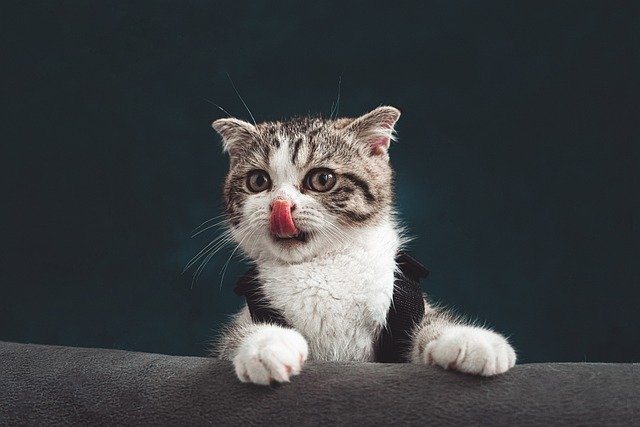How Gifting and Social Media Can Co-Exist

The tradition of giving gifts has always been elemental in human behavior, it was a way to show other people how much you love them or were thankful for something they have done. Gifting has changed a lot over the last few years, mainly with that social media thing becoming popular. Modern day platforms like Facebook, Instagram and Pinterest have transitioned the way in which gifts are conceived of, purchased for and distributed to one another. Social media: For better or worse, in the digital age our gifting practices are incredibly influenced by what is happening on social media.
Perhaps the single most powerful effect of social media on giving is a wealth of ideas and inspiration. Traditionally, people based gift ideas on personal experiences or trusted sources, before the emergence of these platforms With just a few clicks more, users can explore an ecosystem of potential shown to them by both influencers and brands alike. Whether in curated collections or viral trends, exposure to a variety of gift offerings allows fans and customers alike to make their selections as personal as possible; available options are further elevated knowing the choices made will be seen through eyes that hold true passion.
Social media, in addition to that, has changed the way we share and celebrate a gift. Opening a gift, what used to be an intimate act has turned into a shared exercise now shown on followers’ cyberspace. Gifting But beyond the increased sharing, this gifting revolution is rewriting what giving feels like — as a joyful expansion and creative counterpart to the total commercial spirit of shopping headaches. As the target audience starts showcasing(and hence promoting) their gifts on various platforms, they will influence others in its network as well thereby organically evolving conventional gifting to a social experience.
But as we delve more into the complexities of gifting culture, it seems clear that social media has completely redefined gift-exchange so it is easier to just call gifts for what they are today—a fluid and digital demonstration across people’s relationships, collaborations & each other.
The Birth of Digital Wishlist

The speaking of social media, the influence thereon has led to recent years witnessing a surge in digital wish list-making and sharing. Facebook, too has encouraged a modern trend of people creating albums full with pictures of massive gift hauls from the platforms. Personal Collections These aren’t some ancient scrolls — these are in fact more images that individuals flood The Google Territory with. In the meantime, you should know that those new names will hit text messages soon; I’m sure someone is organizing a gift exchange of some sort via Paperless Post especially to have digital wish lists direct from wishlist app users. Collections are not only easy repository for cataloguer and wishlist (I like creating words…), they lower friction so family knows what’s been added / if something has sold out as well which finally allows me w sake heart: must collect feedback on how collections facilitate closed purchases all while lowering abandoned cart rate!
Tech companies are trying to respond to this appetite for data — giving users the ability to easily manage their lists across apps and sites. Features like the option to share curated lists on social media accounts — so that people are able to easily broadcast what they want for their birthday or Christmas, etc. There is Giftster and Wishlist – they are both platforms that facilitate wish lists in a number of ways. In addition, retail platforms often support a “wish list” feature to allow online shoppers to place items of interest and notify the website when they return.
This shift towards using digital tools more frequently is radically altering the consumer landscape. Digital wish lists also allow people to be more transparent and show friends and family what they really want, which helps prevent unwanted gift items. This also underscores an increasing overlap between social media and e-commerce, with brands actively engaging customers via personalized marketing approaches. Yet the emergence of digital wish lists represents a broader cultural change in how we view gift giving, underscoring convenience over personal expression and symbolic meaning amidst changing gifting traditions.
The Voices & The Gifting Culture

The gifting universe has greatly changed with the advent of social media and influencers have contributed significantly to this evolution. Today social media platforms such as Instagram, TikTok and YouTube provide influencers with a huge platform they can use to show off everything anyone could want or wish for too have digitally fueling rose’s consumer demand. Influencers showcase the aesthetics and usability of potential gifts via their massive audiences, causing previously unknown gift options to suddenly become en-vogue among many consumers.
A fun fact is that they often package the items within their recommendations as part of lifestyle in which others wish to aspire, thereby creating a one stop shop for aspiration and acquisition. Lifestyle marketing establishes an emotional bond with the product in that people see this lifestyle as one they would also want to live— more often than not resulting in higher sales and consumer excitement. In addition, influencers have the power to manufacture social proof by creating buzz around a product — that means followers are more apt to purchase goods when they see their trusted figures within digital communities give those products high approval.
So there you have it, the power of social media influencers are adding a whole new aspect to gifting culture today—changing our ideas about what constitutes gift-giving and how we fit into the picture. As such, what they are able to design in terms of desire and authenticity around the product really impacts consumer behavior — new norms as well as expectations when it comes to gifting.
How Fast Sharing Changes What We Give as Gifts

Social platforms like Instagram and Facebook have revolutionized the way we give gifts. The phenomenon of instant sharing, empowers the givers to instantly showcase their gifts and more interestingly it not only heightens excitement linked with receiving a gift but also how we present as well appreciate them. And while that instant visibility has encouraged a culture where gifting is no longer just personal, but almost public (a trend-made-louder by the unboxing video phenomenon)
Things have gotten crazy with the trend for unboxing videos (where people film themselves opening gifts) on platforms such as YouTube and Instagram. Those videos offer a fun insight into the delight and surprise associated with getting something positive, while also fostering anticipation. With the spirit of performance art BottleBottle has changed gift giving, prompting givers and getters alike to get more creative with how we give our presents. A result of that is the idea that consumers should share this moment on social media, influencing potential choices made during gifting whether they be packaging or specific items transforming what deserves to elicit a wow — showcasing.
And that drive to perform for an audience is by no means limited to unboxings. This encourages recipients to perhaps feel compelled to post pictures or stories about their gifts and convert personal moments into a collective act of giving. Because this sharing habit is translated into our new-age relationships, today we derive validation for gift appreciation through the number of likes or comments on a photograph. As such, gift-giving is about more than the item itself (it never really was). This action transcends traditional ways of giving because it weaves gift-giving into the fabric of social media interactions, turning it into a modern day cultural phenomenon.
New Meanings of Personalization

Over the years, personalization in gifting has been incentivized by factors such as the era of social media. And user generated content allowed people to communicate their tastes, wants and experiences publicly which has greatly shaped the way gifts are given today. Rather than earlier methods when gift selection was often by instinct or reflecting on an experience the receiver had, using social media to inform gifts is able to ensure that they are more meaningful and connected with the individual buying.
Researchers, for example, can access their friends’ social media profiles to understand the things they like to do in their leisure time and what their dreams may be. This intimate knowledge of another’s personal life allows gift-givers to couple thoughtfulness and relevance when choosing gifts. Gift givers also understand the trending interest or unstated needs of a recipient from his/her posts, comments and likes which in turn helps them to curate gifts considering; it truly what the individual receiving would actually want. This allows the act of gift-giving to develop into a much more refined expression of human care and understanding.
Besides, user friendly tools and applications of social media have different levels for personalization that also sets the new bar in personalized gifts. This way, services using data from social platforms can provide recommendations: for example, on what products to select based on the interests shown online. That level of specificity not only makes the gift more relevant but it also helps create a stronger emotional connection between givers and receivers. As a result, the gifts of today have changed from random things to more thoughtful items that show you care for them as an individual.
Overall, by virtue of the broader influence social media has on personal relationships and cultural norms; the expectation for true sentiment in gifting would only expand, hovering an ever developing definition over personalized gifts.
Virtual Events, Competitions and Gifting

The way people give has changed, largely influenced by social media. Thanks to social media, we have a virtual event! With physical gatherings restricted on occasion, virtual alternatives have allowed people to connect and take part in common experiences regardless of geographical location
A trend that has become popular is the virtual gift exchange. Such transactions are often facilitated using social media to build a sense of community and hype, where participants can give and receive gifts online. Digital presents provide a great alternative to physical gifts for anyone who just wants the convenience of selection & delivery right on their phone. This is perfect for those who are too far away or busy to make it in person.
Social media platforms, in addition to this, have also fostered the rise of gifting challenges that serve as a means for inviting engagement and interaction. These challenges usually ask users to share their present-giving experiences or show off how they creatively mark special occasions. Meanwhile, creative hashtags have sprung up on social media calling for people to share their stories so as to collectively celebrate the achievement — all while being continents or time zones apart. In addition to the restoration of gift-giving practices, these online actions also foster a sense of community activity.
This colorways iteration of how we honor special events etcetera is additionally advantageous proof that social media de facto makes gift giving work new. Whether it be through virtual birthday parties or creating wish lists online, tools that are offered by these platforms provide for a more elaborate experience when sharing love and warmth without actually being there physically. The fact that people adapted their gifting practices shows resilience and adaptability to a modern challenge, as individuals are navigating this new world.
Gift Giving and Sustainability for the Digital Era

Over the past few years, gifting sustainability has been gaining ground in a movement driven mostly by social media engagement. Social media communities and influencers are highlighting environmentally-friendly alternatives — reminding consumers to think of the sustainable angle while choosing gifts. Consequently, the idea of gift giving has changed to be more thoughtful which is garbage because they think about how you should reflect on what kind of a giver you are.
This is where the growing popularity of social media campaigns on sustainable gifting comes in as powerful triggers for change. Influencers, through beautiful content, are showing gifts that look good and at the same time make a positive impact on others in their society or handmade. These campaigns usually feature stories about the gifts and it encourages consumers to think a little more carefully when choosing what message they want to send out in their purchase. By people posting on Instagram, TikTok — wherever they’re sharing experiences of using these gifts, then it creates that ripple effect where other people can go out and search for them as well.
The concept of “conscientious consumerism”, has become a trend causing the parties involved a greater degree of awareness on where they come from, what materials are used in their production and final disposal. In the light of these events, consumers today are likely to look for sustainable products — those made from recycled materials or sourced through transparent supply chains. Furthermore, the rise in DIY gifting has been encouraged by social media tutorials demonstrating how customized makes teach us that one-of-a-kind handcrafts can be less wasteful while promoting a closer connection between gift giver and receiver.
And as much of this shift is influenced by social media, it indicates just how powerfully instrumental these platforms are in sparking attention and a smoother experience when gifting. By advocating for sustainable gifting practices, these platforms are encouraging the cultivation of a conscious and compassionate consumer culture. As such, social media combined with traditional gifting practices has created a more mindful approach to adopting a sustainability lens in the process of giving.
Shortfalls and Challenges of Social Media Gifting
There… I Said It: The Good, Bad and Ugly of the Social Media Giant as it Applies to Gifting Social media has indeed changed the way people probably think about giving or that is at least how this 21 gift idea list can…by. Rupa maintains a social blog Medium One of those topics is the pressure to offer expensive gifts, influenced by Instagram feeds filled with imagination and trendy presents. It makes people buy expensive things which they cannot afford and pushes them into an unhealthy competition for the biggest gift.
Additionally, the comparison driven culture of social media also creates a set of unreasonable expectations for gift-giving as well. People often measure what they are giving by price, with an eye out how much their peers or favourite influencers donated — which makes it sound more like a competition than an authentic gesture of care. Instead of connecting meaningfully, and with consideration the act becomes a rat race to give out something expensive or flashy ultimately diluting down what thoughtful gifting represents.
Another major disadvantage of social media influence is the shallowness in gifting experiences. However, when the focus turns outward to images and how they might gather likes or attention on social media, gifts themselves can dwindle down from much-needed content to mere symbols. This means that the sense of a personal connection through giving is lost, which makes gifts seem more impersonal and can make recipients feel less appreciated or like pieces in a show to be performed before others. This shallowness can damage relationships, as recipients begin to feel like gift receivers instead of people the giver sincerely cares about.
So, as the manner in which social media alters traditional gifting also changes gift-give-receive behavior we do have some impact – it may change what real giving and getting gifts means village wide. Knowing about these trends is key to navigating today’s gift-giving landscape, and building stronger relationships in a more thoughtful way.
Wrap Up: Here Comes The New Age Of Gifting

In the era of social media, we see a shift in our customs — and these changes are not always subtle. All this was transformed with the emergence of new digital means, available today that have changed our thoughts regarding gifting. It does so not just because it is likely to steer us toward resistance, but also in case we somehow appeal to a wider audience. From curated gift guides splashed across platforms to instant e-gift cards, the list is nearly endless compared with what anyone could have ever dreamt up before modern shopping.
And thanks to social media, people have even newer traditions such as showing off what they got on the internet. Instagram and Facebook have become courts of the exchange, where not only are gifts made but they are also marked as appreciated. This tendency of quick feedback and validation can create a new norm that outweighs the meaning attached to giving gifts cautiously. But the essential elements of tech itself — thought, sentimentality and personal connection in gift giving — that came with gadgets still hold true. Yes, they need to be fashionable in order to fit in today but it must also take into account the timeless nostalgia between that so-called contemporary style and ever-lasting tradition.
Of course, this is not to say that personal connections are now a disappearing act thanks to social platforms impacting our gifting experiences. Remembering that a gift is in its truest form, an expression of love and does not have to be limited by the material medium it takes on during this transition will help. In alignment of such evolving practices with the soulful values of care and sensitivity by taking dancing steps towards traditionalism hand in hand to move to the modernity born gift era. In the end, the real generosity will always lie in our relationships and common love.


